Step 1 – Making the Dataset with Proper Parameters
- You can see our dataset in the image.
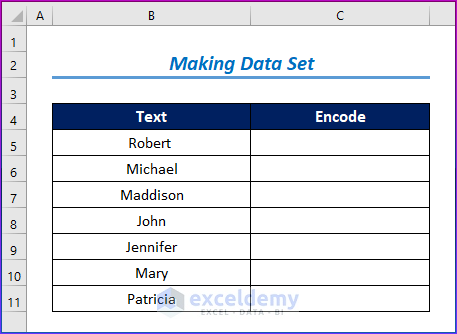
Step 2 – Using the Developer Tab
The Excel built-in Developer tab offers the tools required to use Visual Basic for Applications (VBA) to execute a macro. Typically, the tab is disabled. To make it visible on the toolbar at the top of the Excel window, it has to first be activated in the Options section of the Menu bar.
- Open the Developer tab.
- Select the Visual Basic command.
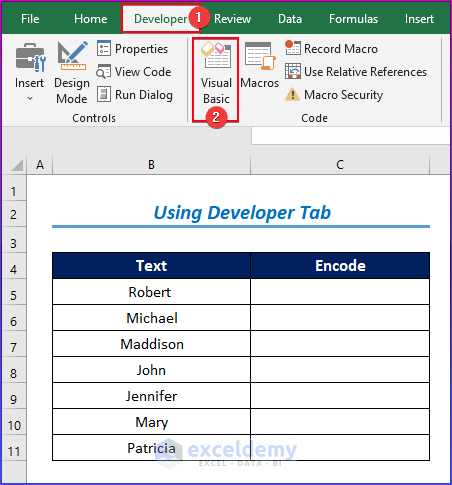
Step 3 – Creating a VBA User-Defined Function
- The Visual Basic window will open.
- From the Insert option, choose Module to write the VBA code.
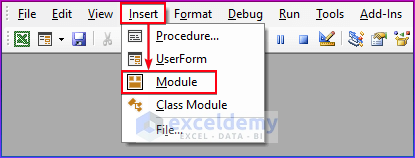
- Paste the following VBA code into the Module.
- Save the code.
Function Encoding(text$)
Dim i
With CreateObject("ADODB.Stream")
.Open: .Type = 2: .Charset = "utf-8"
.WriteText text: .Position = 0: .Type = 1: i = .Read
With CreateObject("Microsoft.XMLDOM").createElement("b64")
.DataType = "bin.base64": .nodeTypedValue = i
Encoding = Replace(Mid(.text, 5), vbLf, "")
End With
.Close
End With
End Function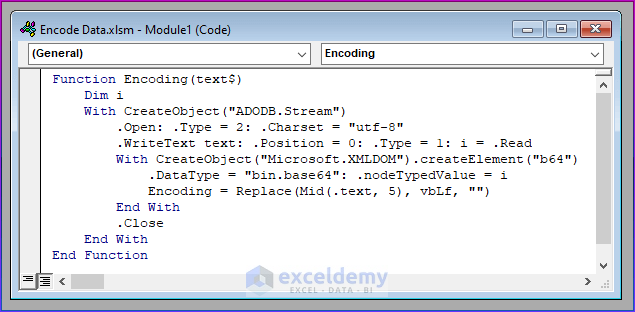
Step 4 – Encoding Data in Excel
- Go to the worksheet and apply the following formula in cell B5.
=Encoding(B5)- Hit Enter.
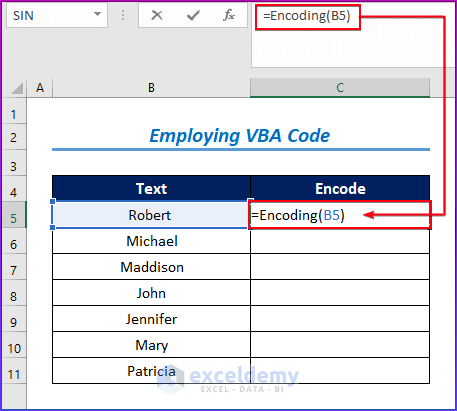
- You will see the encoded result for the first person.
- Use the Fill Handle tool and drag it down from cell B5 cell to cell B11.
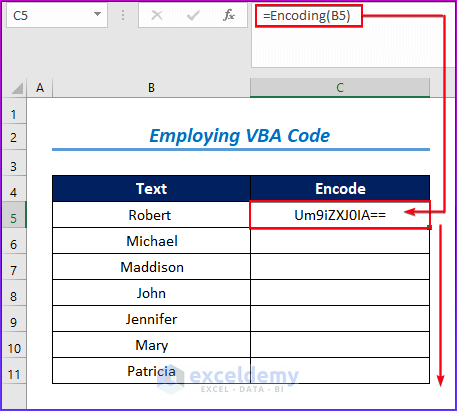
- You will get all the results in the below image.
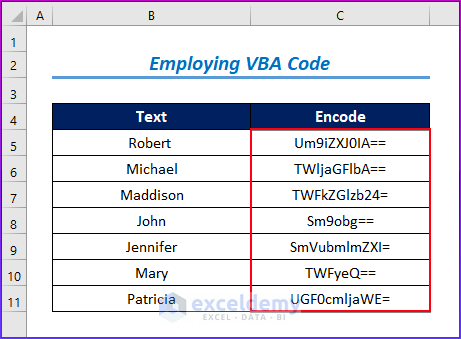
Read More: How to Check Encoding of Excel File
Download the Practice Workbook
Related Articles
- How to Change Encoding in Excel
- [Fixed!] CSV UTF 8 Not Available in Excel
- How to Apply UTF 8 Encoding on CSV File in Excel
- How to Decode Base64 in Excel
<< Go Back to Excel Encoding | Excel Files | Learn Excel
Get FREE Advanced Excel Exercises with Solutions!

